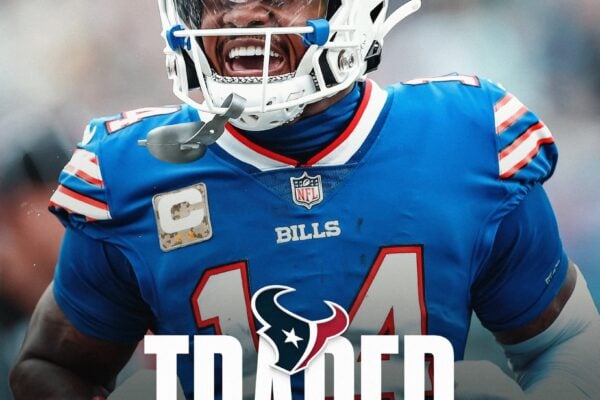Photo courtesy of San Francisco 49ers
On Thursday night, the New York Jets announced that they will hire Robert Saleh, the defensive coordinator for the San Francisco 49ers, as their next head coach.
In order to complement him with an offensive mind, Saleh brought over Mike LaFleur, another San Fransisco assistant, to run that side of the ball.
LaFleur is a progressive mind that certainly emphasizes the passing game. But what is unclear is whether he will favor Ohio State’s Justin Fields or BYU’s Zach Wilson to pick second overall in the NFL Draft.
In this feature, we evaluate LaFleur’s history and the players he worked with in order to get an idea of which quarterback prospect he may be favoring.
Key Concepts of the Shanahan/LaFleur Scheme
Even before coaching the 49ers, LaFleur was always part of head coach Kyle Shanahan’s system. In 2014, Shanahan was the offensive coordinator for the Cleveland Browns and from 2015-16, for the Atlanta Falcons. LaFleur continued to follow him from Cleveland to Atlanta and finally to San Francisco, where he has been ever since.
Therefore, it is logical to assume that the two coaches share offensive philosophies.
Given that the 49ers’ offense ranked in the top half of the league in 2020 while primarily led by Nick Mullens, LaFleur clearly knows how to make the most of his talent.
Play-Action
Although he does not use a run-heavy playbook, LaFleur primarily operates through the play-action.
In each of the last two seasons, the 49ers have been ranked in the top five in the NFL in dropbacks that include a fake handoff. Also during that span, Jimmy Garoppolo and Mullens average over three more yards per attempt on play-actions as opposed to conventional dropbacks. This is the second highest mark in the NFL.
The reason this concept has been vastly successful is because the run and the pass feed off one other. As discussed below, LaFleur likes to use zone runs but he will also often counter them with bootlegs, which gets the quarterback moving outside the pocket.
This has especially led to a more explosive offense. Even since he was part of the Falcons’ coaching staff, LaFleur’s unit has always been in the top third in the league on percentage of plays that gain 20 or more yards.
Speed and Spacing
NFL data analysts will preach that the most successful way to run the ball is to spread the defense out. Providing spacing also gives various receiving options, which logically leads to a more efficient passing offense.
LaFleur has always been a major proponent of this concept. He will often stack his receiving corps with good athletes who can make plays after the catch.
The most obvious example of this would be the current 49ers’ personnel. George Kittle, the tight end, is the complete package, but the other two primary targets, Deebo Samuel and Brandon Aiyuk certainly have that specific skill set.
In 2019, when Samuel played a full season, he had the highest percentage of his yards come after the catch in the NFL. Aiyuk was in the top 10 in that department this year.
Zone Runs
The final major component to LaFleur’s offenses are zone runs.
From primarily under center, he prefers to get offensive linemen into space to make blocks. Thus, LaFleur prefers quick, athletic players on his line that are perhaps on the smaller side.
The backs required in this system are one-cut, downhill style. LaFleur emphasizes good vision and aggressiveness.
A good example of this would be Tevin Coleman, who played under his system in both Atlanta and San Francisco. Coleman is very decisive and has efficient footwork.
What Does This Mean for the Jets?
In terms of the Wilson vs. Fields debate, LaFleur’s scheme does not particularly fall under either umbrella.
If we consider how their offenses were run in college, Fields may be more comfortable. Ohio State’s style of offense favored spread concepts out of the shotgun with some play-action stretch run patterns from under center. This perfectly aligns with LaFleur’s system.
Wilson did not thrive as much with the play-action but is more decisive with his reads. In that respect, Wilson is more aligned to LaFleur’s offense because of his ability to quickly get the ball out to his receivers.
Overall, either quarterback would have a great chance of thriving under his innovative mind. Fields may be a safer pick, due to his known ability to run, but Wilson may have a higher ceiling.
As long as the Jets pick one of those two prospects at No. 2, the future is in promising hands.




